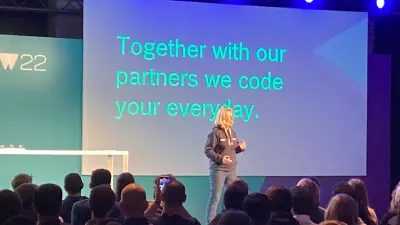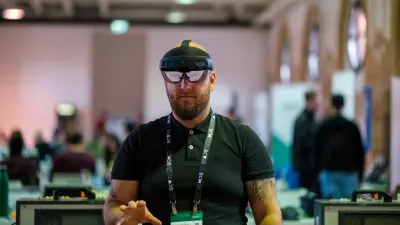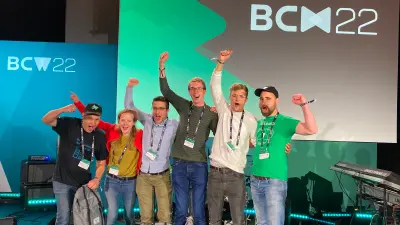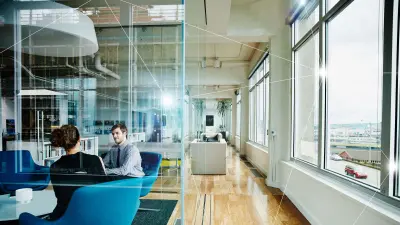Building a New Reality
About 150 developers spent over 30 hours working on user journeys and solutions for making commercial buildings safer and more sustainable, efficient, and comfortable.

The 2022 Building Hackathon was led by Christian Baranowski, André Bott, and Andreas Mauer. It was part of the Bosch ConnectedExperience, and its motto was “Building a New Reality”.
The participants could take advantage of a wide variety of sensors and other equipment along with data on temperature, humidity, room occupancy, energy consumption, access points, parking space use, smoke development, and air quality. Big thanks go to our local partners for supporting this initiative: Amazon Web Services, Kaulquappe, Microsoft MongoDB, Welotec GmbH, and Bosch Smart Home.
We were especially pleased by the many women on the teams. This shows us that we are also succeeding in inspiring many women with our mission of "building solutions for a better life".
Special thanks to the Chair of our hack challenge Henrik Siegle and Christina Cardoso. Their commitment and enthusiasm made the hackathon possible in the first place.
Loading the video requires your consent. If you agree by clicking on the Play icon, the video will load and data will be transmitted to Google as well as information will be accessed and stored by Google on your device. Google may be able to link these data or information with existing data.
At BCX, about 150 developers worked on solutions to make commercial buildings more sustainable, secure, efficient and comfortable. We collected some highlights for you in this video. Lean back and enjoy!
Vux Team: This team came up with a solution that lets building users directly control smart building systems. Thanks to an augmented reality app, tenants and operators can see and con-trol building technology such as lamps, heating, etc. in real time to improve both energy efficien-cy and the user experience.
Chromergy Team: This team's idea is that smart buildings shouldn’t just be about ensuring safety and responding to input. It’s also about proactively creating an environment that boosts the performance of both operators and users. The team’s members built an app that links to a building AI entity based on chatbot technology. Input from sensors and cameras is used to adapt conditions to users’ needs.
Deep Work 2.0 Team: This group worked to increase the room temperature range in which of-fice employees feel comfortable by dynamically adjusting the light chromaticity based on tem-perature data (taking advantage of the so-called hue-heat effect). This helps save energy, es-pecially by heating less in the wintertime.
-

Bosch’s chief digital officer, Tanja Rückert, at the kickoff of the Bosch ConnectedExperience event in Berlin. -

Let the hacking begin! Around 300 participants came together in the Berlin Station to tackle two hack challenges. -

Mixed reality for smart buildings: for wayfinding in a building or digitally facilitating maintenance of building systems. -

About 30 hours spent on user journeys: from sustainability across safety, comfort, and efficiency in buildings. -

Participants formed more than 10 teams to work on their specific topics -

The winners of the 2022 building hackathon. We’re looking forward to the next challenge!






